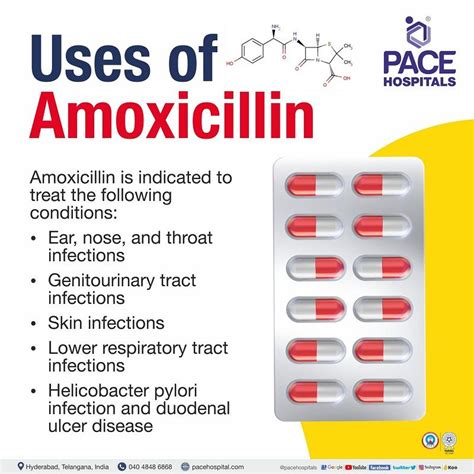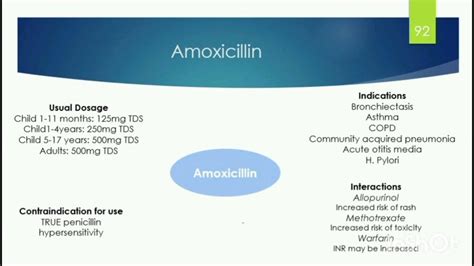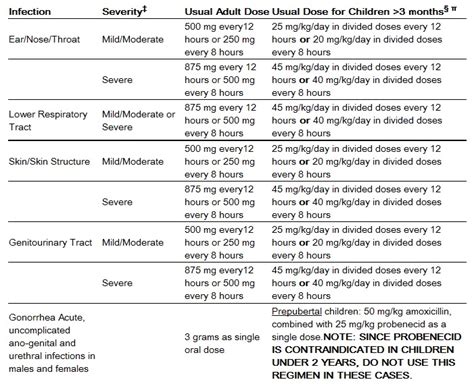Intro
Discover key Amoxicillin facts, including its antibiotic uses, dosage, and side effects, to understand this popular medications benefits and risks, and learn about its interactions and allergic reactions.
Amoxicillin is a widely used antibiotic that has been a staple in the medical world for decades. Its effectiveness in treating a range of bacterial infections has made it a go-to medication for many healthcare professionals. However, there is more to amoxicillin than meets the eye. In this article, we will delve into the world of amoxicillin and explore some fascinating facts about this popular antibiotic.
Amoxicillin has been used to treat various bacterial infections, including pneumonia, ear infections, and skin infections. Its broad-spectrum activity makes it an effective treatment option for a range of conditions. But what makes amoxicillin so effective? And what are some of the potential risks and side effects associated with its use? As we explore the world of amoxicillin, we will discover some interesting facts that will shed new light on this commonly used medication.
The history of amoxicillin dates back to the 1970s, when it was first introduced as a broad-spectrum antibiotic. Since then, it has become one of the most widely prescribed antibiotics in the world. But what makes amoxicillin so popular? Is it its effectiveness, its safety profile, or something else entirely? As we explore the world of amoxicillin, we will examine some of the key factors that have contributed to its widespread use.
Introduction to Amoxicillin

How Amoxicillin Works
Amoxicillin works by inhibiting the growth of bacteria. It does this by interfering with the production of the bacterial cell wall, which is essential for the survival of the bacteria. Without a functional cell wall, the bacteria are unable to survive, and the infection is cleared. Amoxicillin is effective against a range of bacteria, including Streptococcus pneumoniae, Haemophilus influenzae, and Escherichia coli.Benefits of Amoxicillin

Common Uses of Amoxicillin
Amoxicillin is commonly used to treat a range of bacterial infections, including: * Respiratory tract infections: Amoxicillin is effective against bacteria that cause respiratory tract infections, such as pneumonia and bronchitis. * Skin infections: Amoxicillin is used to treat skin infections, such as impetigo and cellulitis. * Urinary tract infections: Amoxicillin is effective against bacteria that cause urinary tract infections, such as cystitis and pyelonephritis.Side Effects of Amoxicillin

Precautions and Warnings
Amoxicillin is a safe medication, but there are some precautions and warnings to be aware of. These include: * Allergic reactions: Amoxicillin can cause allergic reactions, which can range from mild to severe. * Pregnancy and breastfeeding: Amoxicillin is generally safe during pregnancy and breastfeeding, but it is essential to consult with a healthcare professional before taking the medication. * Interactions with other medications: Amoxicillin can interact with other medications, such as blood thinners and certain antibiotics.Amoxicillin Resistance

Preventing Amoxicillin Resistance
There are several ways to prevent amoxicillin resistance, including: * Using antibiotics responsibly: Only use antibiotics when necessary, and always follow the prescribed course of treatment. * Practicing good hygiene: Good hygiene practices, such as washing your hands regularly, can help prevent the spread of infections. * Getting vaccinated: Vaccinations can help prevent infections, reducing the need for antibiotics.Amoxicillin and Other Medications

Managing Amoxicillin Interactions
Managing amoxicillin interactions is essential to minimize the risk of adverse effects. This can be done by: * Informing your healthcare professional: Inform your healthcare professional about all the medications you are taking, including over-the-counter medications and supplements. * Monitoring your condition: Monitor your condition closely, and report any adverse effects to your healthcare professional. * Adjusting your medication: Your healthcare professional may need to adjust your medication regimen to minimize the risk of interactions.Amoxicillin and Pregnancy

Amoxicillin and Breastfeeding
Amoxicillin is generally safe during breastfeeding, but it is essential to consult with a healthcare professional before taking the medication. Amoxicillin can pass into breast milk, and there is a risk of adverse effects on the baby.Amoxicillin Dosage

Amoxicillin Administration
Amoxicillin can be administered orally or intravenously. The oral form is usually preferred, as it is easier to administer and has a faster onset of action.What is amoxicillin used for?
+Amoxicillin is used to treat a range of bacterial infections, including respiratory tract infections, skin infections, and urinary tract infections.
Is amoxicillin safe during pregnancy?
+Amoxicillin is generally safe during pregnancy, but it is essential to consult with a healthcare professional before taking the medication.
Can amoxicillin cause allergic reactions?
+Yes, amoxicillin can cause allergic reactions, which can range from mild to severe.
How long does it take for amoxicillin to work?
+The onset of action of amoxicillin depends on the condition being treated and the dosage. It can take anywhere from a few hours to a few days for amoxicillin to start working.
Can amoxicillin be used to treat viral infections?
+No, amoxicillin is not effective against viral infections. It is only effective against bacterial infections.
In conclusion, amoxicillin is a widely used antibiotic that has been a staple in the medical world for decades. Its effectiveness in treating a range of bacterial infections has made it a go-to medication for many healthcare professionals. However, it is essential to use amoxicillin responsibly and follow the prescribed course of treatment to minimize the risk of adverse effects and prevent antibiotic resistance. We hope this article has provided you with valuable information about amoxicillin and its uses. If you have any further questions or would like to share your experiences with amoxicillin, please feel free to comment below. Don't forget to share this article with your friends and family to help spread awareness about the importance of responsible antibiotic use.
